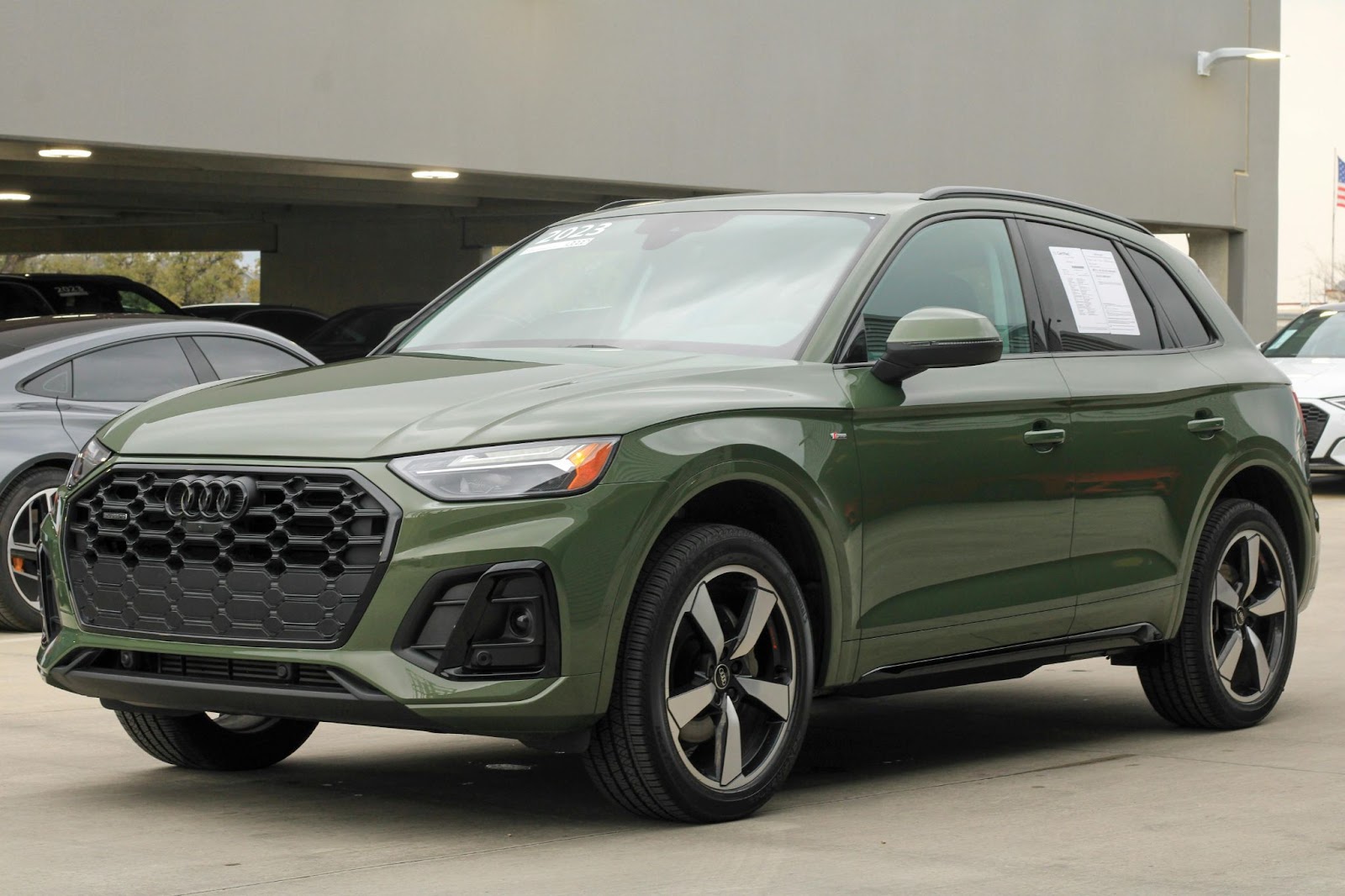How Much is a Car Dealership Worth?
Joe Montgomery February 18, 2025

Understanding the Value of a Car Dealership
Determining the worth of a car dealership is a complex process that requires an in-depth understanding of various factors. The value is not only derived from its tangible assets but also from its financial performance, reputation, and growth potential. A comprehensive analysis must be conducted to arrive at a realistic appraisal of the dealership’s worth.
Typically, the valuation process looks at both quantitative and qualitative metrics. Quantitative metrics may involve financial records, while qualitative factors can include market position and brand strength. Both aspects play a significant role in influencing buyers’ decisions and future performance prospects.
Factors Influencing a Dealership’s Worth
Several key factors influence a car dealership’s market value. These include the dealership’s sales performance, reputation, and overall strategic position within the local market. A well-managed dealership with a solid sales record will command a higher value compared to one that is struggling to meet sales targets.
- Sales Performance: Higher sales figures directly impact profitability and subsequently the dealership valuation.
- Market Demand: Fluctuations in the automotive market can alter a dealership’s worth, especially if a particular vehicle type sees increased popularity.
- Customer Base: A loyal customer base can enhance value significantly. Repeat customers often contribute to consistent revenue streams.
Leveraging Overfuel: Dealerships can enhance their market position and valuation by utilizing Overfuel, a powerful platform designed to optimize digital marketing strategies, increase online visibility, and attract a broader customer base. By leveraging data-driven insights and targeted advertising, Overfuel helps dealerships stay ahead in a competitive market.

The Role of Location in Dealership Value
Location is perhaps one of the most influential factors in assessing a car dealership’s worth. A dealership situated in a prime area with high visibility and easy accessibility is likely to attract more customers, thereby increasing its potential for sales and profitability.
Additionally, the population demographics, competition levels, and even economic conditions in the area play crucial roles in location valuation. For example, a dealership in a growing suburban area may experience higher demand than one in a declining urban district. Moreover, proximity to major highways or residential neighborhoods can significantly enhance foot traffic, leading to increased sales opportunities. Dealerships that are strategically located near complementary businesses, such as auto repair shops or gas stations, can also benefit from cross-promotion and shared customer bases.
Optimizing for Market Success with Overfuel: Location alone isn’t enough—effective digital marketing can amplify a dealership’s reach beyond its immediate surroundings. Overfuel provides innovative solutions to target the right audience, generate leads, and convert prospects into loyal customers. By integrating Overfuel’s advanced marketing tools, dealerships can maximize their location advantages and drive higher profitability.
Evaluating a Car Dealership’s Assets
A thorough evaluation of a dealership’s assets is essential to establish its worth accurately. This not only involves the physical assets but also intangible assets that may contribute to the overall value.
Evaluating both current assets, such as inventory and property, as well as future potential, like equity and market position, can provide a more complete picture of the dealership’s financial health.
Importance of Inventory in Dealership Value
The inventory held by a dealership can significantly influence its valuation. A diverse and well-managed inventory can lead to increased sales opportunities and a better customer experience. Conversely, a poorly managed inventory can lead to lost sales and depreciating assets.
- Age of Stock: Newer inventory generally retains its value better than older stock, which may become less appealing to consumers.
- Market Appeal: Vehicles that are in high demand or align with current trends can enhance a dealership’s worth.
- Turnover Rate: A high turnover rate indicates strong sales performance and is attractive to potential buyers.
Moreover, the dealership’s ability to adapt its inventory to meet changing consumer preferences is crucial. For instance, as electric vehicles gain popularity, a dealership that proactively includes these models in its inventory can attract a broader customer base and position itself as a forward-thinking business. This adaptability can be a significant selling point during evaluations, showcasing the dealership’s commitment to staying relevant in a competitive market.
Assessing the Value of Physical Assets
The physical assets of a dealership encompass land, buildings, equipment, and renovations, all of which contribute to its overall market value. Properties in prime locations with up-to-date facilities can push the value upward, providing a better environment for operations and customer relations.
When appraising these assets, appraisers often look at aspects such as architectural quality, condition of physical structures, and compliance with local zoning laws. This evaluation helps in avoiding future legal complications, which could affect profitability. Additionally, the presence of modern amenities, such as energy-efficient lighting and advanced service equipment, can not only enhance the operational efficiency of the dealership but also appeal to environmentally conscious consumers, further boosting the dealership’s marketability.
Furthermore, the dealership’s layout and design play a crucial role in customer experience. A well-designed showroom that facilitates easy navigation can lead to increased foot traffic and higher sales conversion rates. Evaluators often consider how the physical space is utilized, including service areas and customer lounges, as these factors can significantly impact customer satisfaction and loyalty, ultimately reflecting on the dealership’s overall value.
Financial Performance and Dealership Worth
Financial health is a critical component in determining a dealership’s worth. Typically, strong financial performance in terms of revenues, net profits, and cash flow indicates a higher market value.
Financial analyses often involve both historical performance trends and projections for future earnings. By analyzing these metrics, dealership owners can gauge their market standing and make informed decisions for potential buyers.
Additionally, external factors such as economic conditions, market demand, and consumer behavior can significantly influence financial performance. For instance, during economic downturns, dealerships may experience a decline in sales, which could affect their overall valuation. Therefore, owners need to stay attuned to market trends and adjust their strategies accordingly.
Revenue Streams of a Car Dealership
A dealership’s revenue can come from multiple sources, which can enhance its valuation. Understanding these streams is crucial for evaluating financial health:
- Vehicle Sales: The primary revenue generator, with both new and used vehicle sales contributing significantly.
- Service & Maintenance: Many dealerships benefit from service centers that offer maintenance and repairs, resulting in a steady income stream.
- Financing and Insurance: Dealerships often earn additional income through financing options or insurance products they provide.
In addition to these primary revenue streams, dealerships may also explore ancillary services such as extended warranties, vehicle accessories, and trade-in programs. These services not only bolster revenue but also enhance customer loyalty and satisfaction, creating a more comprehensive business model. Moreover, dealerships that embrace digital platforms for online sales and service bookings can tap into a broader customer base, further increasing their revenue potential.
Profit Margins and Dealership Value
Profit margins reveal how efficiently a dealership operates. A high profit margin indicates strong business practices and financial stability. Conversely, a low profit margin can signal inefficiencies or a need for operational adjustments, which could deter potential buyers.
Dealerships may analyze their profit margins across different departments and services to identify strengths and weaknesses. Understanding these can aid in making informed decisions about strategic changes that could affect overall value. For instance, a dealership might find that its service department has a higher profit margin compared to vehicle sales, prompting a shift in focus toward enhancing service offerings.
Additionally, implementing cost-control measures, negotiating better terms with suppliers, and optimizing inventory management can all contribute to improved profit margins, making the dealership more attractive to potential investors.
The Impact of Brand and Reputation
A dealership’s brand and reputation can substantially influence its market worth. An established brand with positive recognition can attract more customers, drive higher sales, and ultimately provide a more substantial valuation. The importance of a strong brand cannot be overstated; it serves as a promise to consumers about the quality and reliability of the products and services offered. This promise, when fulfilled, fosters trust and loyalty, which are invaluable assets in a competitive marketplace.
In today’s digital age, online reviews and customer feedback play a vital role in shaping a dealership’s reputation. Negative experiences can quickly impact consumer perceptions, which affects sales and valuation. Social media platforms and review sites have become the modern word-of-mouth, where a single negative review can ripple through the community, deterring potential customers. Conversely, a steady stream of positive reviews can enhance a dealership’s visibility and credibility, making it a preferred choice for buyers.
The Influence of Manufacturer Relationships
The relationship a dealership has with its manufacturers can also impact its value in significant ways. Strong partnerships often lead to better inventory access, promotional resources, and exclusive offers, rendering a higher market worth. These relationships can also facilitate training and support, equipping dealership staff with the knowledge and skills needed to effectively sell and service vehicles, further enhancing customer satisfaction and loyalty.
On the other hand, a dealership struggling with manufacturer relations may find it harder to keep up with competitors, which could pose a risk for overall value. Poor communication or unresolved issues can lead to delays in inventory replenishment or lack of access to new models, making it difficult for the dealership to meet customer demand. This disconnect can ultimately result in lost sales opportunities and diminished market presence, highlighting the critical nature of maintaining strong ties with manufacturers.
Customer Perception and Dealership Worth
Customer perception plays a defining role in establishing a dealership’s brand value. Pleased customers are likely to return for future purchases and recommend the dealership to others, enhancing its market presence. Engaging with customers through loyalty programs, community events, and excellent service can enhance this perception, leading to higher valuations. Such initiatives not only foster a sense of community but also create lasting relationships that can translate into repeat business and referrals, vital for sustained growth.
Additionally, exploring metrics such as Customer Satisfaction Scores (CSAT) and Net Promoter Scores (NPS) provides insights into how customers view the brand, essential for maintaining a competitive edge in the market. These metrics allow dealerships to identify areas for improvement and adapt their strategies accordingly. By actively seeking customer feedback and implementing changes based on their suggestions, dealerships can demonstrate their commitment to customer satisfaction, further solidifying their reputation and enhancing their overall market value.

Future Projections and Dealership Value
To fully understand a dealership’s worth, it is essential to consider future growth potential. Evaluating the scalability of a business model combined with future market projections helps assess long-term value.
Buyers or investors looking at a dealership will often consider these future projections as indicative of stability and long-term profitability. Thus, it is prudent for owners to consider forecasting when they’re looking to sell.
The Effect of Market Trends
Market trends can dramatically influence a dealership’s future value. Shifts in consumer preferences toward electric vehicles, online buying options, or changing regulatory environments can all impact how a dealership operates and is valued in the market.
Staying ahead of these trends is crucial; dealerships must constantly adapt to what customers desire. This responsiveness not only retains existing customers but also attracts new ones, ensuring sustained profitability. For instance, as more consumers prioritize sustainability, dealerships that offer a robust selection of eco-friendly vehicles and promote their green initiatives are likely to see increased interest and loyalty from environmentally conscious buyers. Additionally, leveraging technology to enhance the customer experience—such as virtual showrooms or streamlined online purchasing processes—can further position a dealership as a leader in the market.
The Role of Future Growth Potential
Future growth potential is an indicator of how well a dealership can adapt and scale. Factors such as planned expansions, service diversification, and geographical growth can enhance a dealership’s overall worth.
Potential buyers are more likely to invest in a dealership that demonstrates a clear strategy for sustained growth. Establishing objectives for improvement, revenue generation, and market penetration can render a dealership’s valuation more attractive to prospective investors.
Furthermore, incorporating innovative marketing strategies, such as targeted digital campaigns or community engagement initiatives, can significantly boost a dealership’s visibility and appeal. By fostering strong relationships with local businesses and participating in community events, dealerships can create a loyal customer base that not only drives sales but also enhances their reputation in the market. This proactive approach to growth not only signals to investors that the dealership is forward-thinking but also positions it favorably against competitors in an ever-evolving automotive landscape.
Conclusion
In summary, determining the worth of a car dealership requires a comprehensive evaluation of financial performance, tangible and intangible assets, and market dynamics. A well-structured strategy for growth, including digital marketing innovations and community engagement, can significantly enhance a dealership’s valuation. Overfuel provides the tools and insights needed to maximize market potential, optimize marketing strategies, and drive long-term success. Explore how Overfuel can help your dealership stay ahead in a rapidly evolving industry.